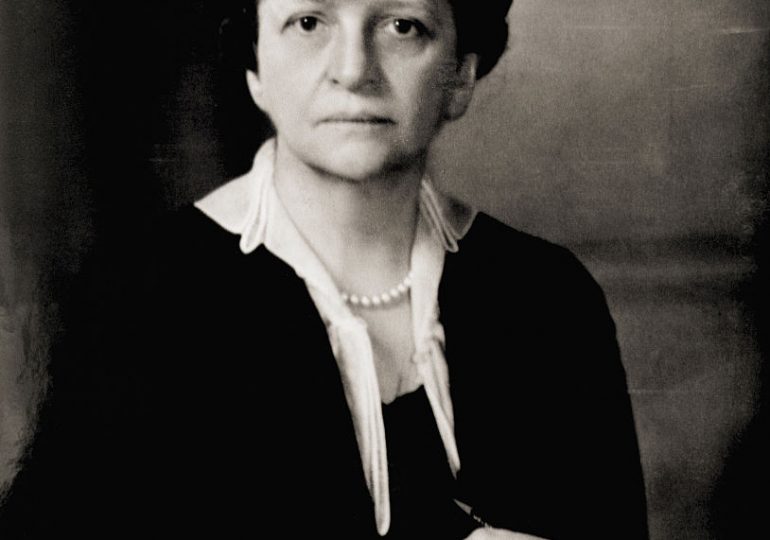In August 2024, the Biden Administration signaled plans to designate the Maine homestead of former Labor Secretary Frances Perkins — the first woman to serve in a presidential cabinet and a key architect of the New Deal — as a national monument. This happened just after President Biden dropped out of the presidential race, clearing the way for Kamala Harris to possibly become the first female president.
The current potentially historic moment for American women is deeply connected to Perkins becoming a rising icon in American historical memory. Current events shape memories of the past — just as historical memory shapes the present.
[time-brightcove not-tgx=”true”]
Perkins did little to cement herself in the historical record. She was more interested in her work and her family’s personal safety than in being remembered. In the subsequent decades, predominantly male scholars didn’t need to be asked twice to follow her lead. Despite standard commemorations like biographies, building dedications, oral histories, and even a postage stamp, Perkins receded from memory by the late 20th century, becoming little more than a trivia answer.
Now, the rise of female politicians is helping to reinsert her in our historical memory in a way that is long overdue. At the same time, newfound appreciation for Perkins is creating new space for women in politics.
In 1911, Perkins was a social reformer working for the New York Consumers’ League when she witnessed the Triangle Shirtwaist Factory fire from across the street. This formative moment launched Perkins toward a government career, beginning with a stint as Chief Investigator of the New York State Factory Investigating Commission. There she labored to improve working conditions for poor women until, in 1919, she joined the state’s industrial commission under Governor Al Smith. Under Smith’s successor, Franklin D. Roosevelt, she spearheaded a myriad of social safety net programs.
When Roosevelt became president in 1933, he appointed Perkins labor secretary — the culmination of decades of work by progressive women’s reform movements. During her 12-year tenure at the Department of Labor, Perkins became the longest-serving labor secretary, and a force behind some of the most significant New Deal legislation, including the National Labor Relations Act, the Social Security Act, and the Fair Labor Standards Act. She also became a tireless advocate for German-Jewish refugees.
Read More: We Do Need More Moms in Politics. J.D. Vance Won’t Get Us There
In 1945, she acquiesced to writing a memoir because her family needed the $20,000 advance, which was higher than her government salary. Yet, because of her aversion to self-aggrandizement, Perkins largely erased herself from the story. She credited Roosevelt for her accomplishments, including her suggestion that he extend the visitor visas of German-Jewish refugees already in the U.S. after Kristallnacht.
After her tenure at the Labor Department ended in 1945, Perkins kept a low profile, doing little to burnish her reputation, though she did sit for oral history interviews with the Columbia Center for Oral History Research.
On May 14, 1965, Perkins died from a stroke. Even in death, she continued to carefully orchestrate her appearances. For her funeral, she chose a biblical passage from First Corinthians that she had used as class president at Mount Holyoke College: “Be ye steadfast, unmovable, always abounding in the work of the Lord, forasmuch as ye know that your labor is not in vain in the Lord.” The verse offered a glimpse of how Perkins wanted to be remembered.
Her New York Times obituary recalled the conservative opposition to her policies and the sexist backlash against her tenure in the cabinet. Quoting a misogynist who’d once called her “a colorless woman who talked as if she swallowed a press release,” the obituary clarified that Perkins spoke clearly because she didn’t “believe men would long tolerate vague women in public office.” The explanation revealed how staying cool and calculated had been the best option for a trailblazing woman whose history-making role was bound to provoke backlash no matter what she did.
In the early 1970s, Perkins’ personal papers and oral history interviews became open to the public, enabling George Martin to produce the first book-length volume on her. His readable narrative concluded that Perkins’ accomplishments were “too little appreciated” because she “disliked personal publicity” and often did “nothing to counter criticism even when it was patently unfair.”
Crucially, Perkins’ daughter remained unwilling to share personal details with Martin that might have enriched the story. Instead, despite its readability, Martin’s biography did little to reinsert Perkins into the public consciousness.
Nor did the first set of commemorations of the former labor secretary’s life. In 1980, President Jimmy Carter dedicated a Department of Labor Building named after Perkins. In his remarks, Carter lauded her as “an outstanding and courageous and farsighted and sensitive human being who literally transformed for the better the life of all Americans.” That day, the U.S. Postal Service also marked the centennial of Perkins’ birth with a commemorative postage stamp.
But these commemorations did little to raise her profile. Instead, interest in Perkins continued to recede for two more decades. Occasionally she would pop up as a quirky fun fact, like being the namesake of Jennifer Grey’s character in the 1987 hit, Dirty Dancing: “Frances, after the first woman in the Cabinet.”
Everything changed after journalist Kirstin Downey heard about Perkins on a bus tour of Washington, D.C., ironically, because the tour guide cracked a sexist joke that the former cabinet secretary had spent “twelve years in labor.” Downey embarked on a decade-long research journey to find out more.
The result was The Woman Behind the New Deal, published in 2009. Bolstered by interviews with Perkins’ daughter, Downey’s deeply human portrayal of Perkins revolutionized how Americans saw the former labor secretary. From trying on hats with her mother to giving Roosevelt a list of demands that were a prerequisite for her accepting the cabinet position — readers truly got to know Perkins.
Downey pulled back the veil created by Perkins’ aversion to public scrutiny and attention. That enabled her to give the former labor secretary a story — which was necessary for Perkins to become a deep part of national memory.
Read More: ‘Women’s Work’ Powers the Economy—And Has Always Been Undervalued
Reflecting growing recognition of Perkins’ historical import, Downey’s book hit shelves the same year as the opening of the Frances Perkins Center on the Damariscotta River in Maine. It embraced Perkins’ belief that “government should provide all its people with the best possible life.” It aimed to preserve “the place that shaped her character.” The homestead quickly joined the National Register of Historic Places. In 2014, Secretary of the Interior Sally Jewell designated it a National Historic Landmark, and in 2020, the Frances Perkins Center completed its capital campaign to purchase the land from Perkins’ grandson to open it to the public.
In 2017, political consultants Joe and Georgia Rospars launched a new wave of attention for Perkins. The couple named their baby daughter after the former labor secretary, and then gave copies of The Woman Behind the New Deal to family, friends, and colleagues, among them Massachusetts Senator Elizabeth Warren.
When Joe Rospars became the chief strategist for Warren’s 2020 presidential run, he could not help but notice the parallels between the two women. Both Perkins and Warren were brave, brilliant, detail-oriented female leaders striving to channel their empathy and talents into improving life for people lacking necessities and security amid structural inequality. This recognition helped lead to Warren delivering a speech in September 2019 to a crowd of more than 20,000 people in Manhattan’s Washington Square Park, overlooking the site of the Triangle Shirtwaist Factory fire. The crowd stood feet from where Perkins had witnessed poor immigrants, mostly women, jump to their deaths.
Warren embraced the symbolism, physically leaning on a podium made of wood salvaged from the Perkins homestead. Her words connected how the fire ignited something within Perkins to Warren’s own commitment to improving living and working standards for Americans. At the time, Warren was starting to surge in the polls and was especially popular among younger Democrats. As a result, Perkins and her narrative — as told by Warren and guided by Rospars and Downey’s research — found favor with new audiences.
In March 2021, Vice President Harris celebrated Women’s History Month by tweeting a commemoration of Perkins becoming the first female cabinet secretary. She paid tribute to Perkins’ role in implementing Social Security, unemployment insurance, and a federal minimum wage. Implicitly, this recognition aimed to acknowledge and legitimize the parallels between Perkins’ pathbreaking role and Harris’s own.
If Harris becomes president, that will be another watershed moment in women’s history. When Perkins’ homestead becomes a national monument likely before the end of 2024, it will honor the precedents that she set for women making history.
These moments unfolding together is not a coincidence. Female lawmakers have supported a national monument honoring Perkins, and the excitement and buzz created by the potential for the first female president may push the proposal across the finish line.
Rebecca Brenner Graham is author of Dear Miss Perkins: A Story of Frances Perkins’s Efforts to Aid Refugees from Nazi Germany, which is available for preorder and will be published by Kensington in January 2025. She is a postdoctoral research associate at Brown University.
Made by History takes readers beyond the headlines with articles written and edited by professional historians. Learn more about Made by History at TIME here. Opinions expressed do not necessarily reflect the views of TIME editors.
Leave a comment








